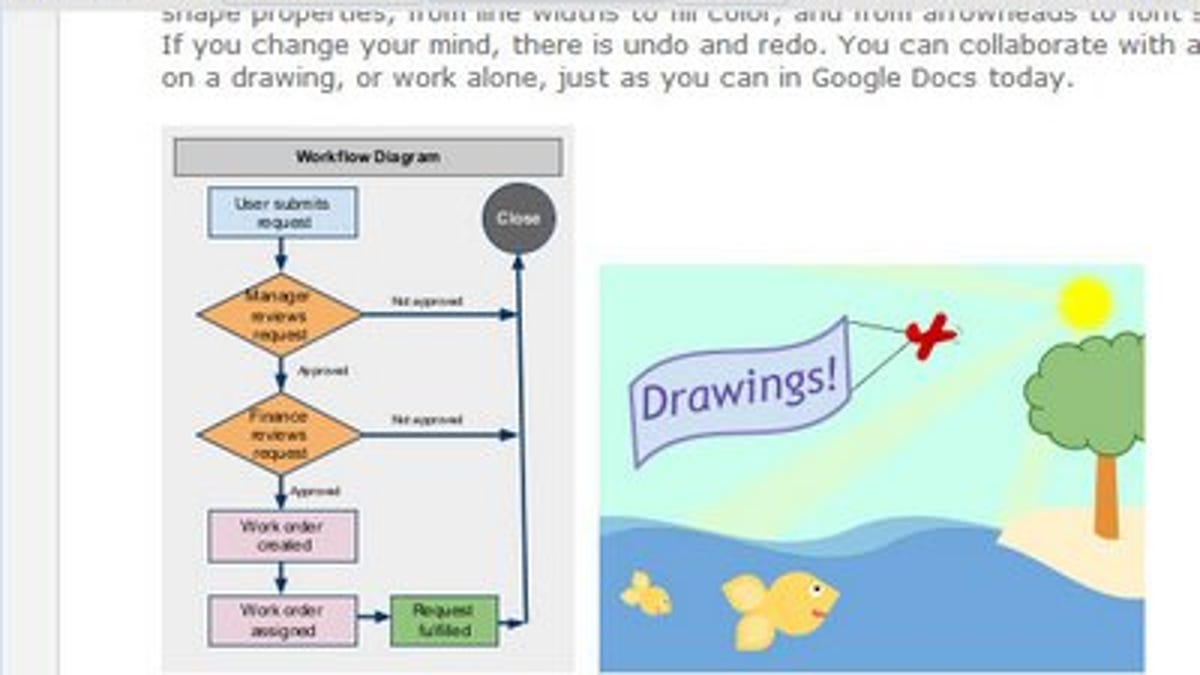Google Docs gets collaborative-drawing feature
It's not going to dethrone Adobe Illustrator, but adding drawing tools to Google's online-documents application is useful. Included are tools for altering colors, shapes, and object order.

Google has added a basic drawing ability to Google Docs, letting people add graphical elements such as org charts or diagrams to their online word-processing documents, spreadsheets, and presentations.
You shouldn't expect to be able to crowdsource your online document into something fit for the Guggenheim, but the feature does offer several useful illustration tools that can be used within Google Docs' multi-author collaborative framework.
Among them: a variety of shapes, arrows, and lines, a free-form curve tool, and text boxes. You can change border and fill colors, add text to various shapes, and rotate and resize them. You can reorder objects, too, to bring one to the front of the pile, for example. I found the technology easy to use and relatively responsive.
The technology came to Google through its April 2007 acquisition of Tonic Systems, according to a Google Docs blog post.
By using SVG (scalable vector graphics) or VML (vector markup language), if SVG isn't available, the feature works in browsers without having to use any plug-ins such as Flash.

